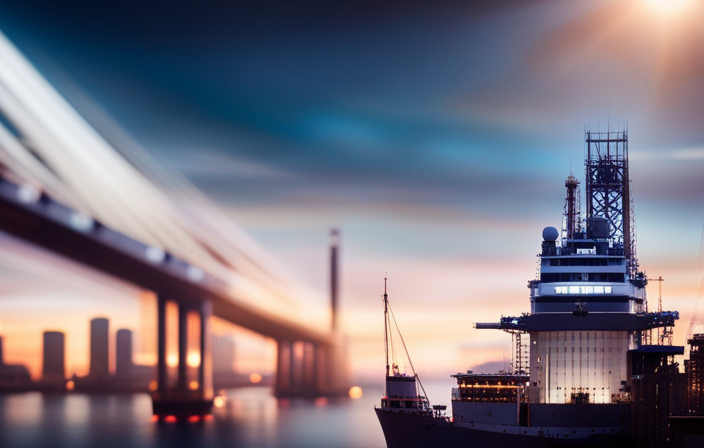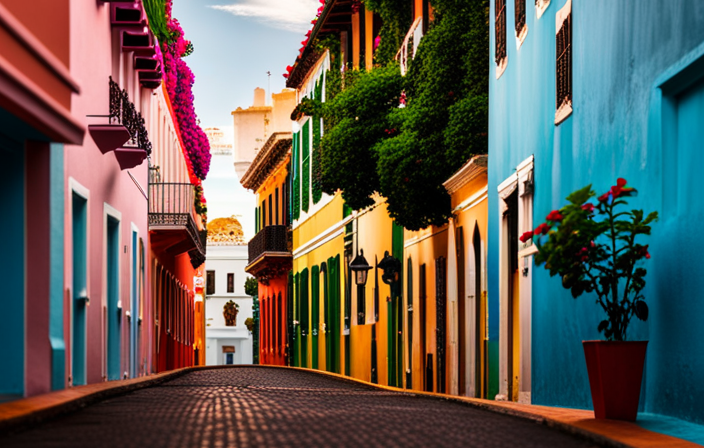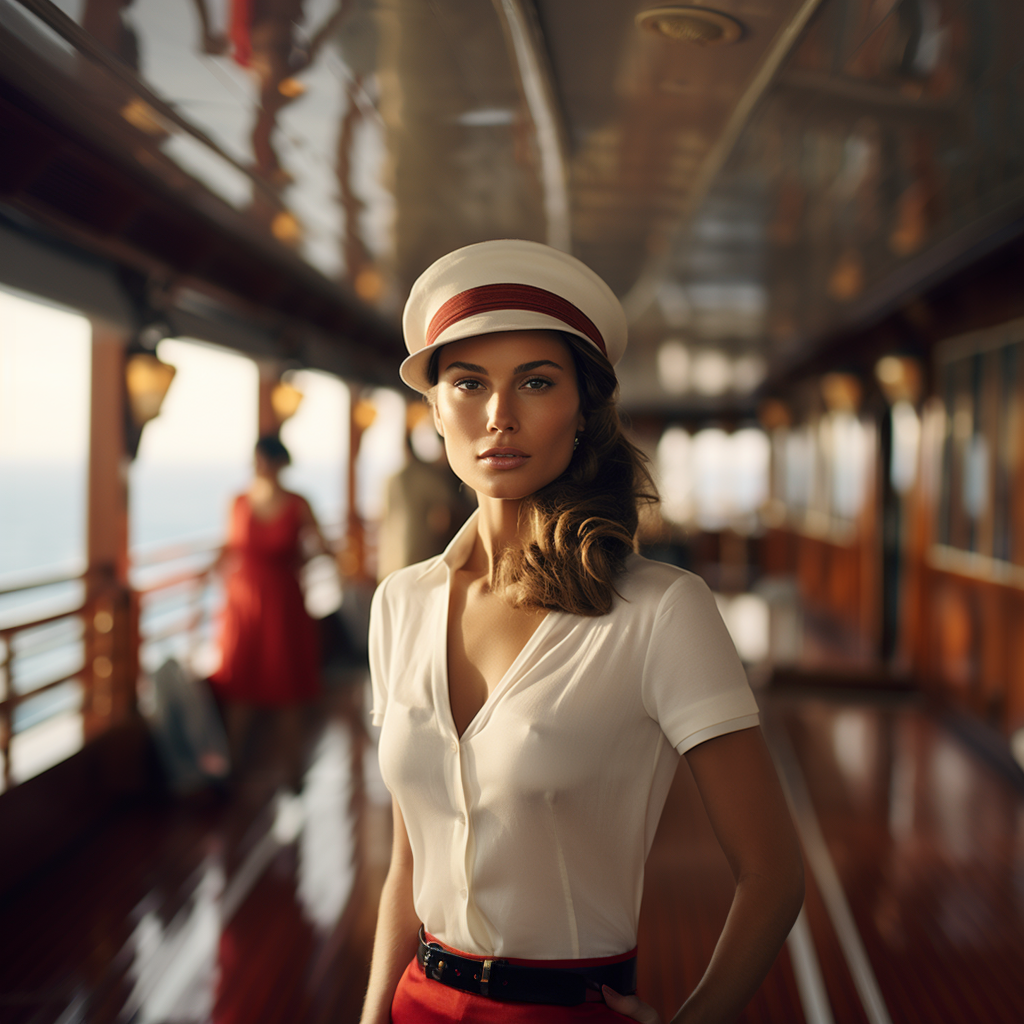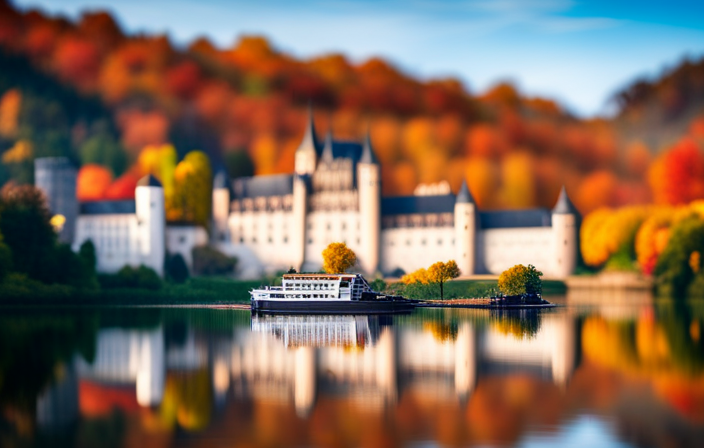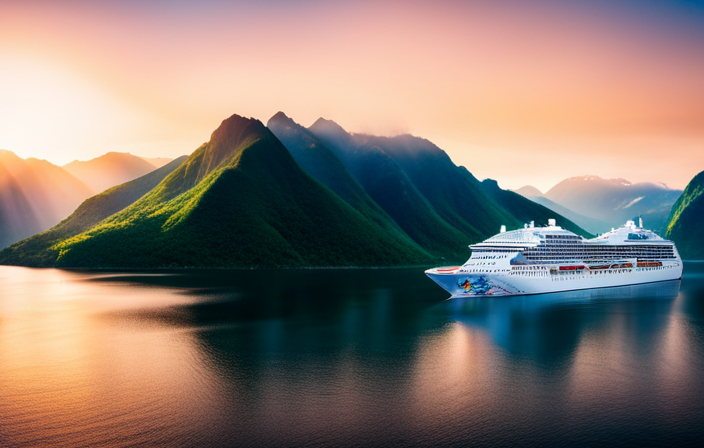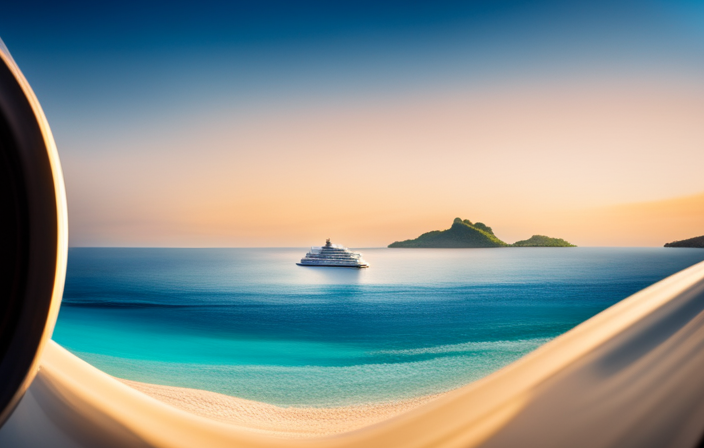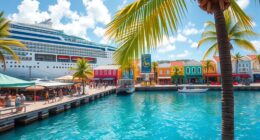Imagine diving deep into the sea’s depths only to emerge with a vast floating palace, a realm where opulence and grandeur know no bounds. These magnificent cruise liners, voyaging to distant destinations, represent marvels of contemporary design and engineering.
But have you ever wondered about the cost behind their creation? In this article, we will delve into the world of shipbuilding, exploring the financial intricacies that go into bringing these floating cities to life.
From the size and capacity to the design and architecture, every aspect of a cruise ship is carefully calculated to meet the demands of modern-day travelers. We will examine the materials used, the construction process, and the technological features that make these ships state-of-the-art marvels.
Additionally, we will explore the labor costs, financing, and maintenance expenses that contribute to the overall price tag.
So, join me on this voyage as we uncover the secrets and figures behind the cost of building a cruise ship.
Key Takeaways
- Cruise ships require substantial capital to build due to their size and complexity.
- Financing options such as loans, partnerships, and government subsidies are available for cruise ship construction.
- Labor and workforce costs are a significant aspect of cruise ship construction, with skilled labor shortage and unionization leading to higher costs.
- Proper budgeting for maintenance and upkeep expenses is crucial, as regular maintenance, dry-docking, and major upgrades require long-term investments.
The Size and Capacity of the Ship
Building a cruise ship can cost a pretty penny, but when it comes to the size and capacity of the ship, things start to get really interesting. Shipbuilding techniques have evolved over the years, allowing for the construction of larger and more efficient vessels. The industry trends show that cruise ships are getting bigger and accommodating more passengers. This increase in size and capacity is achieved through innovative design and engineering.
Advanced shipbuilding methods, such as modular construction and computer-aided design, have revolutionized the process. These techniques enable faster construction and improved efficiency. As a result, cruise ships can now carry thousands of passengers and offer a wide range of onboard amenities.
Moving on to the next section about design and architecture, it’s fascinating to see how these technological advancements have shaped the overall look and feel of modern cruise ships.
Design and Architecture
Crafting the architectural blueprint for these majestic floating cities is an art that requires meticulous attention to detail and a profound understanding of the oceanic canvas.
The design and architecture of cruise ships play a vital role in creating a visually stunning and functional vessel. Aesthetics and aesthetics are carefully considered to create a captivating exterior that attracts passengers and sets the ship apart from others in the industry.
Functionality and ergonomics are equally important, as the ship’s layout must optimize passenger flow, maximize space utilization, and ensure a comfortable experience. From the placement of cabins and public spaces to the design of entertainment venues and dining areas, every aspect is carefully planned to enhance the overall passenger experience.
As we delve into the subsequent section about materials and construction processes, we will explore how these designs are brought to life.
Materials and Construction Process
The selection of high-quality materials and the meticulous construction process are vital elements in bringing the magnificent designs of cruise ships to life. Cruise ship builders prioritize durability, safety, and aesthetics when sourcing materials. They carefully choose materials that can withstand the harsh marine environment, such as corrosion-resistant steel for the hull and weather-resistant coatings for the exterior.
Shipyard selection is also crucial. It determines the expertise and capabilities of the builders. Shipyards with extensive experience in constructing large vessels are preferred.
The construction process involves various stages, including steel cutting, welding, and outfitting. Advanced techniques like laser cutting and robotic welding are employed to ensure precision and efficiency.
These meticulous processes result in the creation of stunning cruise ships that offer exceptional comfort and luxury.
Transitioning into the subsequent section, technological features and innovations play a significant role in enhancing the overall cruise experience.
Technological Features and Innovations
Experience the extraordinary world of modern cruise ships, where cutting-edge technology and innovative features transport you to a realm as captivating as a symphony of dancing lights. Cruise ships today are equipped with advanced technological features that not only enhance the passenger experience but also prioritize energy efficiency and digital connectivity. These innovations allow for a more sustainable operation and seamless integration of digital services onboard.
One key area of focus in modern cruise ship design is energy efficiency. Ships are built with advanced hull designs and propulsion systems that minimize fuel consumption and emissions. Additionally, onboard systems are optimized to reduce energy usage, such as LED lighting and advanced HVAC systems. These measures not only benefit the environment but also result in cost savings for cruise lines.
Another important aspect is digital connectivity. Cruise ships now offer high-speed internet access and cutting-edge communication systems, allowing passengers to stay connected with the outside world while at sea. This includes Wi-Fi coverage throughout the ship and the ability to stream and download content. These advancements have transformed the cruise experience, enabling passengers to work, stream movies, and stay connected with friends and family.
In conclusion, the technological features and innovations found on modern cruise ships greatly enhance the passenger experience while prioritizing energy efficiency and digital connectivity. These advancements not only contribute to a more sustainable operation but also provide passengers with a seamless and connected experience at sea. As we delve into the next section about interior furnishings and amenities, the journey continues to unfold with even more delights.
Interior Furnishings and Amenities
Step aboard a modern cruise ship and be transported to a world of luxurious interior furnishings and amenities that create an enchanting and indulgent atmosphere.
When it comes to designing these spaces, cost considerations play a significant role. Cruise ship companies carefully analyze market demand and customer preferences to determine the most cost-effective yet appealing interior options. They consider factors such as material costs, maintenance expenses, and durability to strike a balance between elegance and affordability.
The market demand for opulent furnishings and amenities varies, with some customers seeking lavish décor and others prioritizing functionality and comfort. By understanding these preferences, cruise ship builders can optimize their resources and allocate budgets accordingly.
As we delve into the next section on safety and security systems, it is crucial to recognize how interior design choices and cost considerations impact the overall cruise ship experience.
Safety and Security Systems
Once you step foot on a modern cruise ship, you’ll immediately feel reassured knowing there are top-notch safety and security systems in place to ensure your peace of mind throughout your voyage. These systems are meticulously designed to prevent fire incidents and facilitate emergency response if needed. Fire prevention measures include state-of-the-art fire detection systems, automatic sprinklers, and fire-resistant materials used in construction. In the event of an emergency, cruise ships are equipped with advanced communication systems, lifeboats, and life rafts to ensure the safety of all passengers and crew. Additionally, comprehensive emergency response plans are in place, outlining procedures for evacuation, medical emergencies, and coordination with authorities. To provide an emotional response to the audience, consider the following table:
| Safety and Security Systems | Importance |
|---|---|
| Fire Detection Systems | High |
| Emergency Communication | High |
| Lifeboats and Life Rafts | Critical |
| Fire-resistant materials | Moderate |
| Comprehensive Response Plan | Critical |
As we delve into the next section about environmental regulations and sustainability measures, it is important to acknowledge the significant efforts made to ensure passenger safety onboard cruise ships.
Environmental Regulations and Sustainability Measures
Cruise ships have implemented various environmental regulations and sustainability measures to minimize their impact on the environment. These measures are aimed at reducing the negative effects of cruise ship operations on marine ecosystems and improving fuel efficiency while reducing emissions.
One of the key areas of focus is the reduction of air and water pollution. Cruise ships now use advanced technology to treat and reduce their waste, including wastewater and solid waste. They also employ systems to monitor and control emissions from their engines, such as using low-sulfur fuel and installing exhaust gas cleaning systems.
In addition, cruise ships are investing in fuel-efficient technologies to reduce their carbon footprint. This includes the use of hybrid power systems, advanced hull designs, and energy-saving equipment onboard. By implementing these measures, cruise ships are working towards achieving a more sustainable and environmentally friendly industry.
Transitioning to the subsequent section about labor and workforce costs, it is important to understand how these environmental regulations and sustainability measures impact the overall costs of building and operating cruise ships.
Labor and Workforce Costs
Labor and workforce costs can be a significant anchor weighing down the financial voyage of operating a cruise ship, making it a challenging sea to navigate. When it comes to building a cruise ship, labor costs play a crucial role. Here are some key points to consider in relation to labor and workforce costs within the cruise ship construction industry:
-
Skilled labor shortage: The cruise ship industry requires a specialized workforce, including engineers, electricians, welders, and carpenters. However, there is often a shortage of skilled workers in the labor market, leading to increased competition and higher wages.
-
Global labor market: Cruise ship construction often takes place in countries with lower labor costs, such as Germany, Italy, and Finland. Shipbuilders may outsource labor to these regions to save on costs.
-
Unionized workforce: Many shipbuilders employ unionized workers, which can lead to higher labor costs due to negotiated wages, benefits, and work conditions.
-
Training and development: Cruise ship construction requires a skilled and knowledgeable workforce. Investing in training and development programs for workers can help ensure high-quality construction.
Labor and workforce costs are just one aspect of the complex financial landscape of building a cruise ship.
Moving forward, let’s explore the next section on financing and investment.
Financing and Investment
After discussing the labor and workforce costs involved in building cruise ships, let’s shift our focus to the financing and investment aspect.
Building a cruise ship requires a substantial amount of capital, and shipbuilders often rely on various financing options to fund these projects. These options may include loans from financial institutions, partnerships with investors, or even government subsidies. The goal is to secure the necessary funds while minimizing the financial risks involved.
However, investing in cruise ship construction can be lucrative. Cruise lines generate significant revenue from ticket sales, onboard services, and other sources. This, in turn, offers a promising return on investment for those who finance the construction. Understanding the potential financial gains is crucial in decision-making for shipbuilders and investors alike.
Now, let’s delve into the subsequent section about maintenance and upkeep expenses.
Maintenance and Upkeep Expenses
To keep your cruise ship in top shape, you’ll need to regularly invest in maintenance and upkeep expenses. These costs can vary depending on the size and complexity of the ship. Here is a cost breakdown to give you an idea of what to expect:
-
Routine maintenance: This includes regular inspections, cleaning, and minor repairs. On average, this can cost around $1 million per year for a mid-sized cruise ship.
-
Dry-docking: Every few years, the ship will need to be taken out of the water for more extensive maintenance. This can cost anywhere from $10 million to $60 million, depending on the scope of the work required.
-
Long-term investments: As the ship ages, you may need to invest in major upgrades and renovations to keep up with industry standards and customer expectations. These investments can range from $50 million to over $100 million, depending on the extent of the upgrades.
Properly budgeting for these maintenance and upkeep expenses is crucial to ensuring the longevity and success of your cruise ship.
Frequently Asked Questions
How long does it take to build a cruise ship?
Building a cruise ship is a complex process that involves multiple stages, including design, fabrication, and assembly. The construction timeline can vary, but on average, it takes around 2-3 years to build a cruise ship, depending on its size and complexity.
What are the common challenges faced during the construction of a cruise ship?
During the construction of a cruise ship, common challenges include construction delays, which can result from unforeseen technical issues or inclement weather, and cost overruns, often caused by design changes or unexpected expenses.
How are the different areas of a cruise ship divided and organized?
The cruise ship layout is divided into different areas such as cabins, dining areas, entertainment venues, and recreational facilities. These amenities are strategically organized to maximize passenger comfort and ensure a smooth flow of operations onboard.
Do cruise ships have their own power generation facilities?
Yes, cruise ships have their own power generation facilities known as power supply systems. These systems are designed to ensure energy efficiency on board the ship, providing electricity for various operations and amenities.
What steps are taken to ensure the safety of passengers and crew during construction?
During construction, various construction safety measures are implemented to ensure passenger and crew protection. These measures include rigorous inspections, adherence to safety regulations, implementation of safety protocols, and the use of advanced safety equipment and technology.
What Factors Contribute to the Cost of Building a Cruise Ship?
Many factors contribute to the cost to build cruise ship: size, construction materials, onboard amenities, and technology upgrades. The larger the ship and the more luxurious the features, the higher the overall cost. With increasing demand for eco-friendly ships, incorporating sustainable materials and energy-efficient designs also impacts the final price tag.
Conclusion
In conclusion, building a cruise ship is a complex and expensive endeavor. Every aspect, from the size and capacity to the design and materials, contributes to the final price tag. Technological features and interior furnishings, along with environmental regulations and labor costs, further add to the expenses. Financing and investment are crucial for making these projects possible. Meticulous maintenance and upkeep are necessary for these floating marvels to continue sailing the seas. Building a cruise ship is a colossal undertaking, with no limit to the potential cost.
Meet Asra, a talented and adventurous writer who infuses her passion for exploration into every word she writes. Asra’s love for storytelling and her insatiable curiosity about the world make her an invaluable asset to the Voyager Info team.
From a young age, Asra was drawn to the power of words and their ability to transport readers to far-off lands and magical realms. Her fascination with travel and cultures from around the globe fueled her desire to become a travel writer, and she set out on a journey to turn her dreams into reality.

